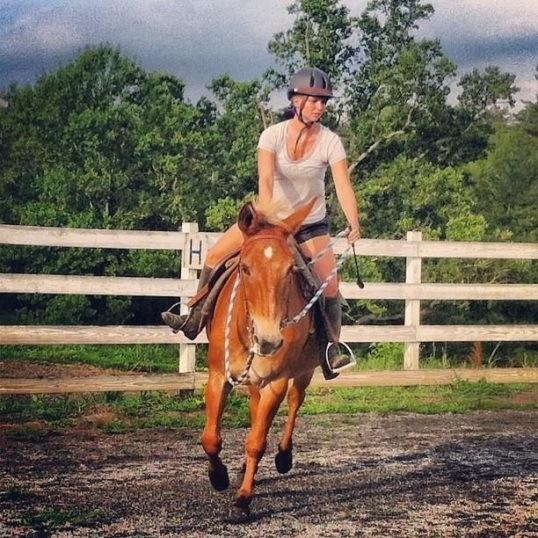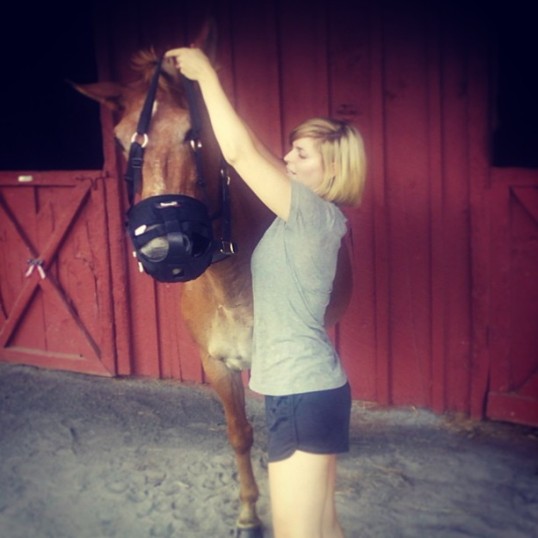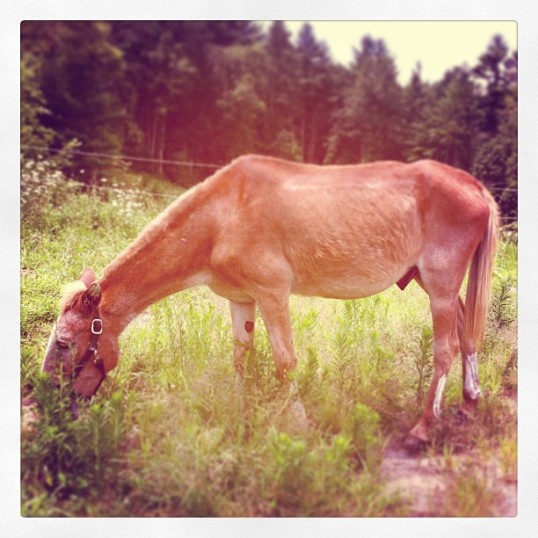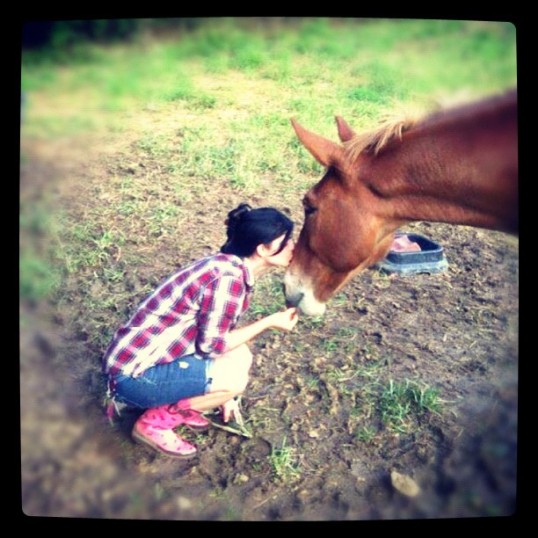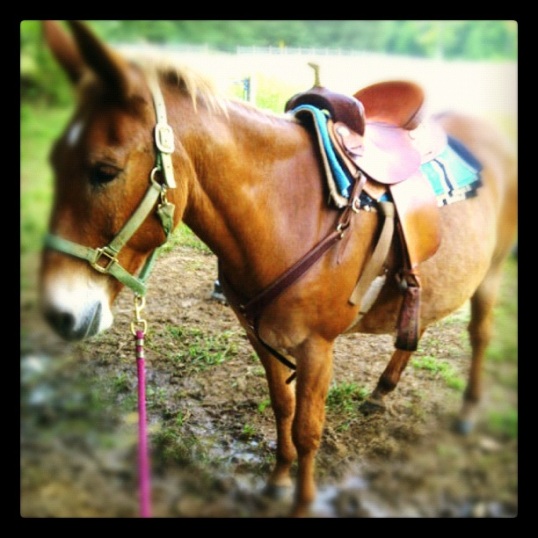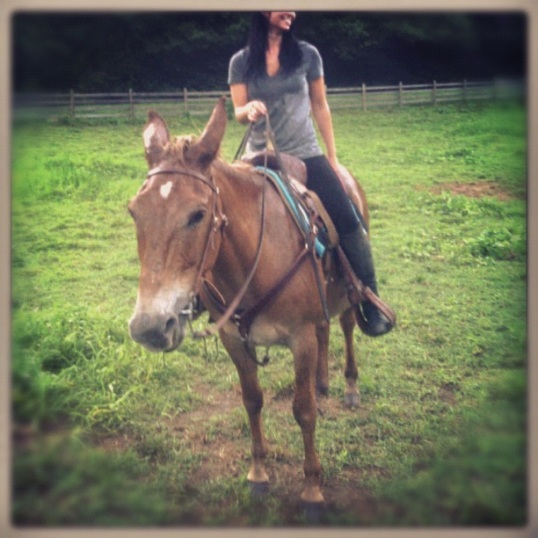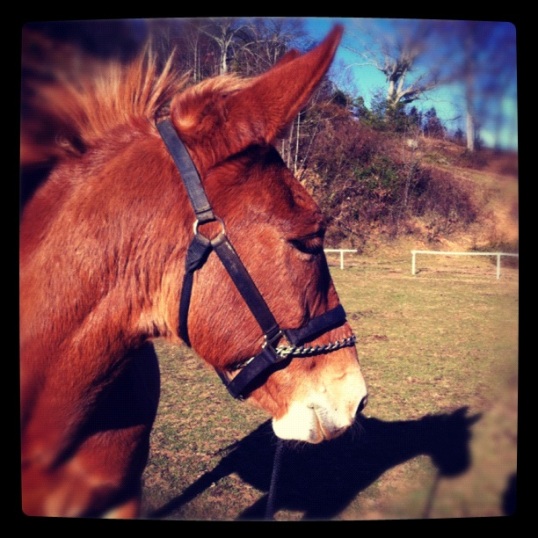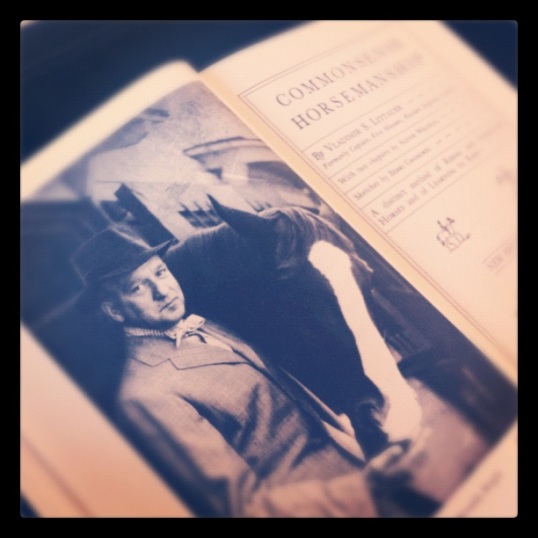My name is Morgan and I own a pair of mules. They are delightful animals and I adore both of them, but as with most cooperative partnerships love alone is not enough. Domestic animals require training, and equines require very specialized training because they’re really, really big and could send you to the emergency room with a serious and lasting injury merely by accident. They often do and it is through no fault of their own, which leads me to my next point.
The people who handle equines require specialized training too, for their own safety and for the safety of the animals they are handling. Tragically, this aspect of the relationship between an human and an equine partner (be they a rider or groom) is often neglected at the peril of all parties involved. Case in point: Advertisements for “30 Days Professional Training”, maybe from a cowboy or maybe from a hunt seat instructor and trainer or maybe from someone who just wants to try their hand and training horses for cash. This is America after all and unlike our European counterparts in the horse world we don’t require any real credentials to set up shop as an instructor or trainer.
I only know this because I’ve been paid cash to ride, I’ve had teaching positions at large equestrian facilities, and I’ve even been paid to do competitive cattle work on green horses when in reality the entire time my horsemanship was still in its infancy. I can say “I’ve been riding and working with horses since I was knee high to a grasshopper,” but what I can’t say is “I have had quality instruction from well-qualified horsemen and women since I was knee high to a grasshopper.” That, ladies and gentlemen, means all the difference in the world.
So here I am, still a budding horseperson with just enough knowledge to avoid major catastrophe and a pair of mules with very real behavioral issues that absolutely must be dealt with because it just isn’t sustainable to own a 1200 lbs animal that has made a habit of being a bully. Red is a 14 year old saddle mule with a tragic history of abuse in the form of restraint, poor communication, malnutrition, neglect, and ill-fitting equipment. John Henry is a retired saddle mule who was left to his own devices in a pasture for about 2 years with no farrier work or nutritional supplementation, and although he is not as aggressive as Red he still exhibits what basically amounts to ZERO ground manners. But again, I love them both. They are my babies. And these are not insurmountable obstacles in terms of training. Red and John Henry have very bright futures ahead of them provided I practice good mulemanship.
And it’s not like I’m going at this all by myself. I have LOTS of help. Red and John Henry live at a small but well run boarding facility in East Canton, NC managed by an experienced instructor and trainer and staffed by horsepeople who all practice a common method of handling the animals so that no one is getting their wires crossed in terms of communication. The rules for the Monday feeding with Person A are the same as the rules for the Tuesday Feeding with Person B and the Wednesday feeding with Person C. They key to good training is, after all, consistency.
I’m also taking lessons with the aforementioned trainer, who has system of teaching and schooling that utilizes the theories of good horsemanship and their practical application. What she doesn’t do is stick me on a schoolmaster and yell “Heals down!” from the middle of the arena. Anyone who has had any contemporary instruction from an unqualified “trainer” knows all of the familiar cadences. “Heals down! Eyes up! Good! Suuuper!”
Oh, and did I mention that I have a textbook now too? And reading assignments and homework for both myself and my mules? It’s like being in school again, which makes sense because the idea is to learn. Instead of relying on an instructor to make my decisions for me on the ground and in the saddle, my instructor is honing my critical thinking skills with the tools I need to make good decisions on my own. Few instructors teach their students to think and reason independently by sharing the theories if good horsemanship because if they did, eventually those instructors would be out of a job. I am fortunate enough to have found an instructor who doesn’t rely on getting her students in the ribbons as quickly as possible or keeping their horsemanship underdeveloped so that they will remain part of her lesson program indefinitely. Of course, she also isn’t exactly raking in oodles and oodles of money either because that isn’t the sort of teacher that we reward in our society. Ah, such is life.
Now you’re up to speed. Welcome to Mule Diaries.
Morgan

